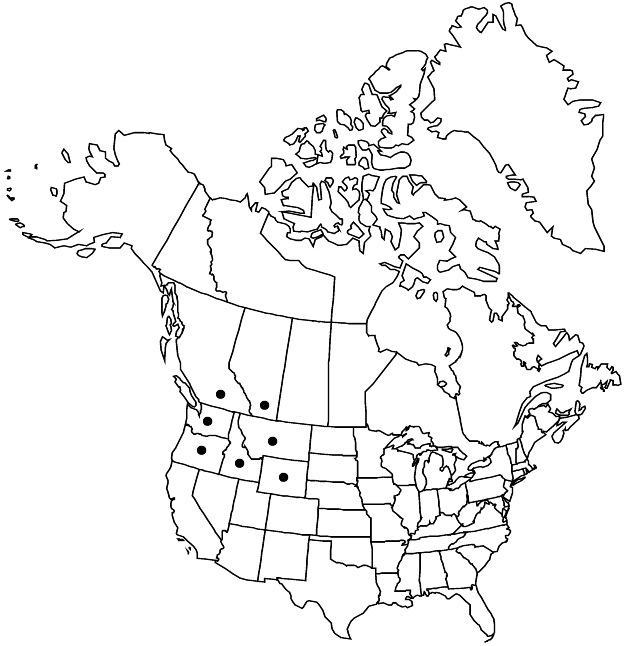Silene parryi
Revis. N. Amer. Silene, 36. 1947.
Plants perennial; taproot thick; caudex branched, woody, with tufts of basal leaves. Stems erect, simple, (10–)20–60 cm, softly puberulent, viscid-glandular distally. Leaves mostly basal; basal petiolate, blade oblanceolate, spatulate, 3–8 cm × 2–14 mm, not fleshy, margins shortly ciliate, apex ± acute, glabrous to puberulent on both surfaces; cauline usually in 2–4 pairs, blade narrowly oblanceolate, lanceolate to linear-lanceolate, 0.2–0.8 cm × 10–80 mm, not fleshy, puberulent on both surfaces, at least distal ones glandular. Inflorescences (1–)3–7-flowered, open, bracteate; bracts linear-lanceolate, broadened at base, 2–10 mm. Pedicels ascending, usually longer than calyx, puberulent, viscid stipitate-glandular. Flowers: calyx prominently 10-veined, campanulate, inflated, ± umbilicate, not or only slightly constricted toward base, (10–)12–16 × 7–9 mm in fruit, glandular-pubescent, strongly viscid, veins parallel, purplish, with pale commissures, not much broadened distally, commissural veins slender, forked distally and fused to those of lobes, lobes ovate to broadly triangular with lanceolate midrib, 2–3 mm, margins purple tinged, broad, membranous; corolla white, often tinged green or purple, clawed, claw equaling calyx, glabrous, broadened distally, limb deeply 2-lobed, rarely 4-lobed, 5–7 mm, lobes with 2 prominent lateral teeth, appendages 2(–4), 1.5–2 mm; stamens equaling calyx; stigmas 3(–5), exserted. Capsules included in calyx, opening by 3(–5) teeth, each tardily splitting into 2; carpophore 2–3 mm. Seeds brown, not winged, broadly reniform and often flattened, 1.5–2.5 mm, rugose to shallowly tuberculate on sides, larger tubercules on margins. 2n = 48, 96.
Phenology: Flowering summer.
Habitat: Mountains, gravelly ridges, rocky and grassy slopes, subalpine meadows, grassy openings in montane forests
Elevation: 1500-3000 m
Distribution

Alta., B.C., Idaho, Mont., Oreg., Wash., Wyo.
Discussion
Silene parryi is very similar to S. douglasii, but the latter is normally eglandular with a characteristic short, gray, retrorse pubescence. The two species may hybridize, accounting for the occurrence of populations of S. douglasii with some glandular pubescence in the inflorescence. Silene parryi is closely related also to S. scouleri, but the latter is normally readily distinguished by its pink flowers; taller stature; long, narrow, many-flowered inflorescences; and fusiform fruiting calyces that are constricted around the carpophore. However, some depauperate specimens of S. scouleri from montane habitats are difficult to place. Also, small plants of S. parryi from alpine habitats can easily be mistaken for S. grayi. The anthers of S. parryi are often smutted with Microbotryum violaceum (Persoon) G. Deml & Oberwinker [= Ustilago violacea (Persoon) Roussel], e.g., in the type collection of S. tetonensis.
Selected References
None.